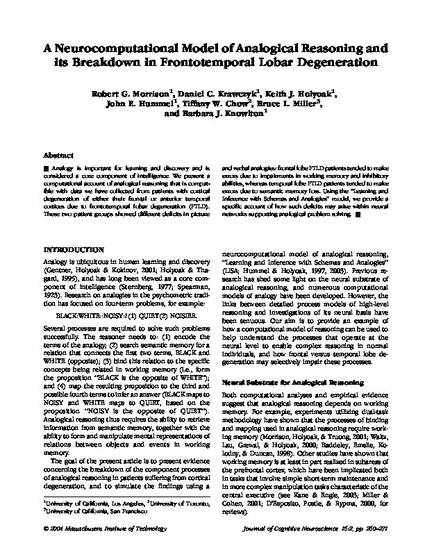
Analogy is important for learning and discovery and is considered a core component of intelligence. We present a computational account of analogical reasoning that is compatible with data we have collected from patients with cortical degeneration of either their frontal or anterior temporal cortices due to frontotemporal lobar degeneration (FTLD). These two patient groups showed different deficits in picture and verbal analogies: frontal lobe FTLD patients tended to make errors due to impairments in working memory and inhibitory abilities, whereas temporal lobe FTLD patients tended to make errors due to semantic memory loss. Using the ‘‘Learning and Inference with Schemas and Analogies’’ model, we provide a specific account of how such deficits may arise within neural networks supporting analogical problem solving.
© 2004 Massachusetts Institute of Technology

Author Posting © MIT Press, 2004. This article is posted here by permission of MIT Press, for personal use, not for redistribution. The article was published in Journal of Cognitive Neuroscience, Volume 16, Issue 2. http://dx.doi.org/10.1162/089892904322984553.